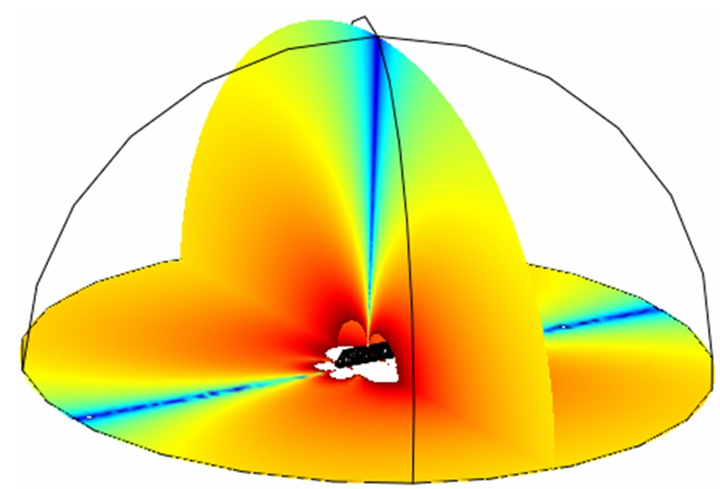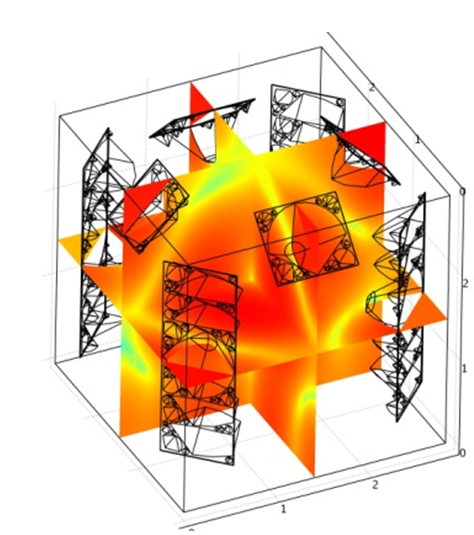A full description of acoustic analysis is varied and complex since applications cover a range of frequencies and integrates: generation of acoustic waves through vibration; propagation through multiple media, through atmospheric layers, along surfaces and interfaces, in rooms and auditoriums; diffraction, reflection, absorption and attenuation during transmission, and structural response due to an incident acoustic wave.
Sources of sound may arise due to natural or forced vibration: natural vibration due to structural resonance is particularly important for noise, vibration, and harshness (NVH) in vehicle dynamics and is also important for detecting incident acoustic waves; forced vibration is probably most commonly found in loudspeakers where a membrane is forced to vibrate at specific frequencies governed by an input signal.
Propagation of an acoustic wave through a medium is described by a second order partial differential equation that gives the evolution of acoustic pressure as a function of time:
Where p is the acoustic pressure, c is the speed of sound in the propagating medium and t is time.
Depending on the materials through which the wave is propagating, the dynamics of vibration of the source and objects with which it interact, the acoustic wave may be directional, diffuse or diffract through large angles. The latter is particularly true for acoustic waves traveling through the atmosphere where layers of different temperature, wind speed and humidity may exist and under the right conditions it has been shown through acoustic analysis that characteristic acoustic waves may propagate for hundreds of kilometers.
AltaSim’s experience in acoustic analysis has been used by its clients to address issues across the full range of frequencies by examining:
- Propagation of infrasound through geophysical and atmospheric domains
- Development of acoustic sensors
- Generation of controlled shapes of resonant vibration
- Optimization of acoustic signature of recording studios and auditoriums
- Structural health monitoring of implanted devices
In addition, AltaSim also provides a comprehensive range of training on acoustics analysis with the following course:
Need Help with Acoustic Analysis?
Contact us about our Acoustic Analysis technology services.






